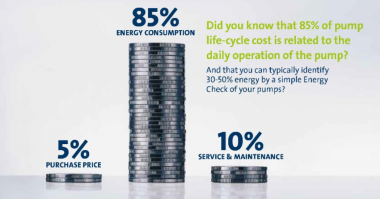Contributor: Hydraulic Institute
The Hydraulic Institute (HI) has published new American National Standards combining 1-series and 2-series standards into a single 14-series standards. Historically, Hydraulic Institute standards have been divided into “1-series” standards covering centrifugal pumps and “2-series” standards covering vertical pumps. These included the following standards:
Centrifugal Pump Standards
- ANSI/HI 1.1-1.2 Centrifugal Pumps for Nomenclature and Definitions
- ANSI/HI 1.3 Centrifugal Pumps for Design and Application
- ANSI/HI 1.4 Centrifugal Pumps For Manuals Describing Installation, Operation and Maintenance
- ASNI/HI 1.6 Centrifugal Pump Tests
Vertical Pump Standards
- ANSI/HI 2.1-2.2 Vertical Pumps For Nomenclature and Definitions
- ANSI/HI 2.3 Vertical Pumps For Design and Application
- ANSI/HI 2.4 Vertical Pumps For Manuals Describing Installation, Operation and Maintenance
- ANSI/HI 2.6 Vertical Pump Tests
In the 2000’s the Institute’s technical leadership reviewed its standards and nomenclature and determined the content in the 1-series and 2-series documents had repetitive information and that the nomenclature could be more accurately described. This resulted in an effort to combine each of the 1-series and 2-series standards into a single 14-series standard. The series of standards are as follows:
- ANSI/HI 14.1 -14.2 Rotodynamic Pumps For Nomenclature and Definitions
- ANSI/HI 14.3 Rotodynamic Pumps For Design and Application
- ANSI/HI 14.4 Rotodynamic Pumps For Installation, Operation and Maintenance
- ANSI/HI 14.6 Rotodynamic Pumps For Hydraulic Performance Acceptance Tests
As noted in the names of the standards, the old centrifugal and vertical pumps are grouped under the name rotodynamic, which is an improvement in the accuracy of the nomenclature describing these types of pumps.
For further explanation of these new standards review the following white paper: www.pumps.org/14series or contact HITechnical@pumps.org.
The Hydraulic Institute: Advancing the pump manufacturing industry by becoming the world’s resource for pumping solutions by: Addressing Pump Systems, Developing Standards, Expanding Knowledge and Resources, Educating the Marketplace and Advocating for the Industry. For more information on the Hydraulic Institute, visit www.pumps.org.





Comments